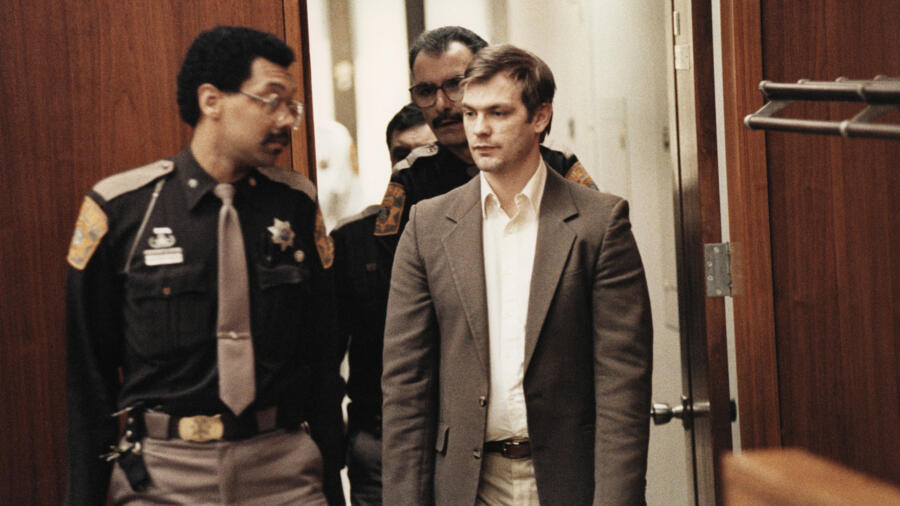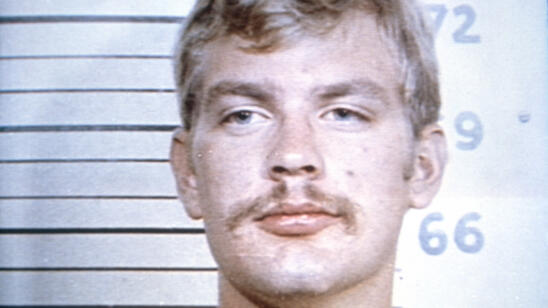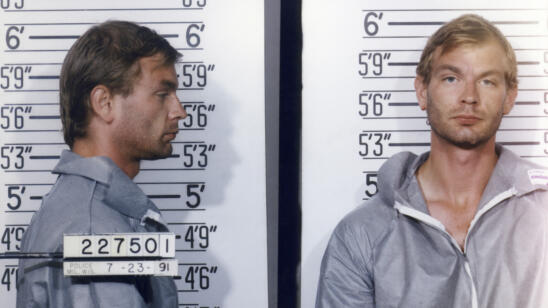A phone call from a source on the night of July 22, 1991 changed reporter Anne E. Schwartz’s life. Schwartz broke the story of serial killer and cannibal Jeffrey Dahmer and his gruesome apartment of horrors for The Milwaukee Journal. Later that year she wrote the book The Man Who Could Not Kill Enough: The Secret Murders of Milwaukee’s Jeffrey Dahmer.
Today a strategic communications consultant for public safety officers and prosecutors all over the world, Schwartz spoke with A&E True Crime about what it was like breaking the story and then uncovering the life and murders of one of America’s most notorious serial killers.
You were the reporter to break the story. How did you find out?
I was a part-time weekend police reporter—the lowest rung on the reporting ladder. I loved covering the police beat. I spent a lot more time than (my allotted) 24 hours a week doing it: I did ride-alongs, I ordered pizza for [police] roll call, and I spent a lot of time sitting around in [police] districts—which is why on the night of July 22, 1991, I got a call from a [police] source on a Monday night when I was not working.
[Stream Invisible Monsters: Serial Killers in America, with no sign in required in the A&E app.]
The source told me I should come on over to 25th [Street] and Kilbourn [Avenue] because there was a guy saving body parts in his house. I always had a healthy skepticism when it came to officers, but there was something in his voice. It was clear to me that the person who called me thought this was going to be a big deal.
You were also the only reporter ever to step foot into Dahmer’s apartment, 213 in the Oxford Apartments. What was it like?
I was the first reporter, the only reporter, on the scene at the time. It was eerily quiet. Usually, crime scenes are bustling places, with people yelling, trying to create a scene or trying to talk to reporters. This was completely quiet, and I never experienced anything before or since like that.
I walked up the stairs, and I got to the front of Dahmer’s door, and there were very few officers there. The detectives weren’t even there yet. I was just standing there, inside the door. Nobody invited me into the apartment because they had bigger things to worry about.
The apartment pretty much looked like a single guy’s apartment. There were some dishes in the sink, but it was fairly tidy. I didn’t really notice anything that got my attention that this was some sort of den of horrors.
There was a smell to the apartment. I already knew that whoever lived there was saving body parts, and if you are familiar with the smell of death, when you smell that smell, you know what you’re smelling. People ask how could (residents) not know what they were smelling, but people who lived there would have been more concerned with other things, This apartment was in a neighborhood severely challenged by violent crime and poverty, and sometimes things that went unnoticed there would have been noticed in a different apartment in a different neighborhood. People pretty much kept to themselves in that building, and they wouldn’t have gotten involved in anyone else’s business.
What happened next?
I talked to the officers who were there, but then I went back outside to talk to the neighbors. I think I may have gotten some of the only genuine interviews because, in that moment, they didn’t know what a big deal this case was going to be—that this was something they’re going to be talking about [decades] later.
A few of the people knew him as Jeff, and a lot of people described him to me as ‘that weird white dude.’ They had an impression that he was just strange, didn’t engage with others. One of the reasons Dahmer likely chose that building is that it’s a place where you keep to yourself, and nobody’s going to bother you.
People were huddled together. I was still on the scene when the blue barrel came out. (The 57-gallon barrel contained body parts and corrosive chemicals.) That’s the video you see anytime there’s a documentary or story about Dahmer.
What was it like following the story?
I devoted myself to learning everything about him. People gave me documents I wasn’t supposed to have. I saw photographs of (the horrors) in the apartment. I chased down anybody who might have had a story [about Dahmer]. I went to the gay bars to talk to bartenders. I interviewed his prom date.
All the bartenders remembered Dahmer because he was a regular. They said he was a nice guy, who was nice looking and put himself together well. His prom date told me that he didn’t seem like he really wanted to go, and that he was drunk. This poor girl didn’t go home and think she had been on a date with a killer.
Most people didn’t have anything incriminating to say. I will read or see these interviews, and there were people who worked with him at Ambrosia Chocolate who will say he was secretive about his locker. No, he [actually] had a skull in his locker at work. But there’s a reason he didn’t get caught [sooner]—he [wasn’t] very obvious about what he was doing.
Did you ever meet Dahmer?
Yes, his attorney Gerry Boyle introduced him to me when we were in the judge’s chambers, but Dahmer also reached out to me after the book was published. He was upset—and because your life isn’t weird enough until a serial killer is upset with you—that I had spent a great deal of time talking about what the psychiatrist said about why he had done the things he did. He told me he didn’t want any kind of excuse—that nobody was responsible for his murders except for him.
Why do you think he reached out to you?
When I did interviews, people would ask me: Did you meet him? And he knew I’d say yes, and then I would share that he did not appreciate any kind of blame put on his parents. He was smart. He was a manipulator.
He was charming, but he was very soft spoken. You wouldn’t have remembered him if you met him. He wasn’t drop-dead gorgeous, and he wasn’t the scariest guy in the world. He was absolutely vanilla.
You also covered his death, on November 28, 1994, in the Columbia Correctional Institution in Portage, Wisconsin, at the hands of fellow inmate and convicted murderer, Christopher Scarver.
I am not a big conspiracy theorist. But the most high-risk prisoner in the entire prison was cleaning a bathroom with the second most high-risk prisoner, Jesse Anderson (who murdered his wife and staged the murder, blaming an unknown Black man) [along] with Christopher Scarver, who was mentally unstable. That those three would have been able to be together [in the first place] and long enough for Scarver to beat them both to death with a barbell, and no guards saw anything…
This part of the whole story is the most murky. How did this happen in a maximum-security prison, and nobody saw anything? I still have the names of all the guards who were working at the time, and I’m always watching the death notices to see if there will be a deathbed confession by somebody who had been there. But so far, there’s nothing like that.
Related Features:
Connecting With Jeffrey Dahmer: The Detective Who Grilled the Serial Killer Had Mixed Emotions
Jeffrey Dahmer’s Childhood: A Pail of Animal Bones Was His Toy Rattle
Jeffrey Dahmer, Albert Fish and More: Why Do Some Serial Killers Turn Into Cannibals?
First They Tortured Animals, Then They Turned to Humans
John Wayne Gacy, Jeffrey Dahmer and Others: Ranking Serial Killers on a Scale of Evil


